Ayre and the Crystal Comet: low-poly open-world fun, with a caveat
I’m not normally a “frame rate and resolution” kind of guy, but eastasiasoft’s Ayre and the Crystal Comet is one of the rare examples where I found these things did make a genuine difference to the experience.
I first started playing the game on a base-spec PlayStation 4, and I was ready to write it off as one of those indie games that had clear potential, but which stumbled so much in its execution it was more of a chore to play than a pleasure. I wanted to like the game, but I just couldn’t quite bring myself to; there was too much wrong with it.
Then I picked up a PlayStation 5 and, while I was downloading and installing some other titles ready to try for the first time, I thought I’d give Ayre and the Crystal Comet another chance. I wasn’t expecting the jump in console generation to make a huge difference, but I thought I’d give it a go regardless.
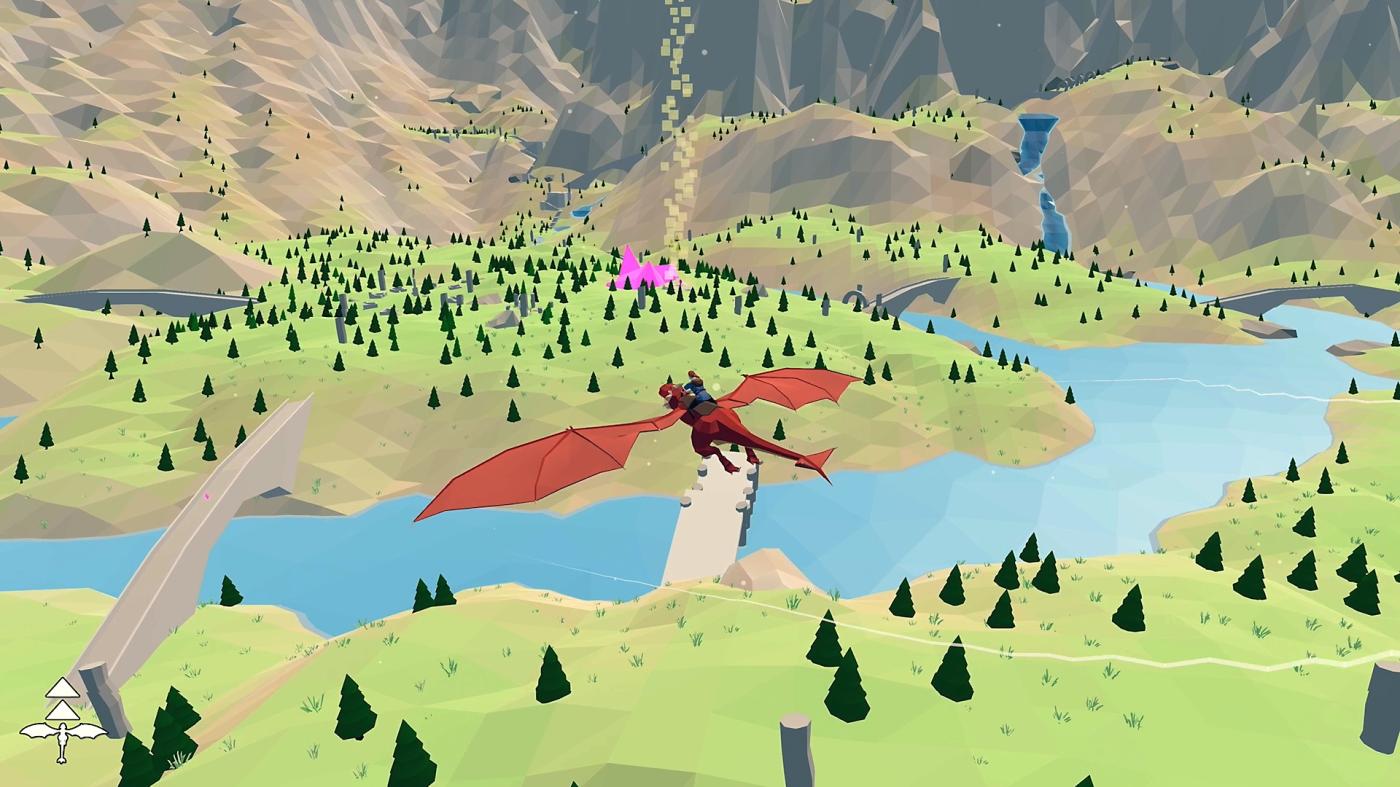
It did make a huge difference. In stark contrast to the janky, poorly optimised PlayStation 4 version, the PlayStation 5 version’s consistent slickness and super-sharp visuals made Ayre and the Crystal Comet a genuine pleasure to play. Finally, it felt like this game was realising its potential — albeit with one or two rough edges still remaining here and there. So if you’re going to play this, play it on PlayStation 5 or one of the more powerful Xbox platforms.
In Ayre and the Crystal Comet, you take on the role of Ayre, a young woman who has befriended the last remaining dragon. She has come to a mysterious valley, and quickly discovers that there are a lot of historical remnants of an ancient civilisation. From here, it’s your job to… do whatever you want within the confines of the game mechanics, really. Ostensibly your “main quest” is to collect as many of the scattered pink crystal shards as possible, but there are also plenty of other things to do as you explore.
Ayre and the Crystal Comet’s valley setting is an open-world environment that you can explore on foot or on the back of your dragon pal. Walking is generally inadvisable for anything other than looking at things up close, because Ayre walks (and runs) quite slowly. Her animation is also incredibly wooden, and there’s a strange “head bob” camera movement in the third-person mode that some people may find unpleasant to experience. Strangely, this bobbing motion is absent from the game’s first-person mode, though the controls in first-person feel a little awkward.
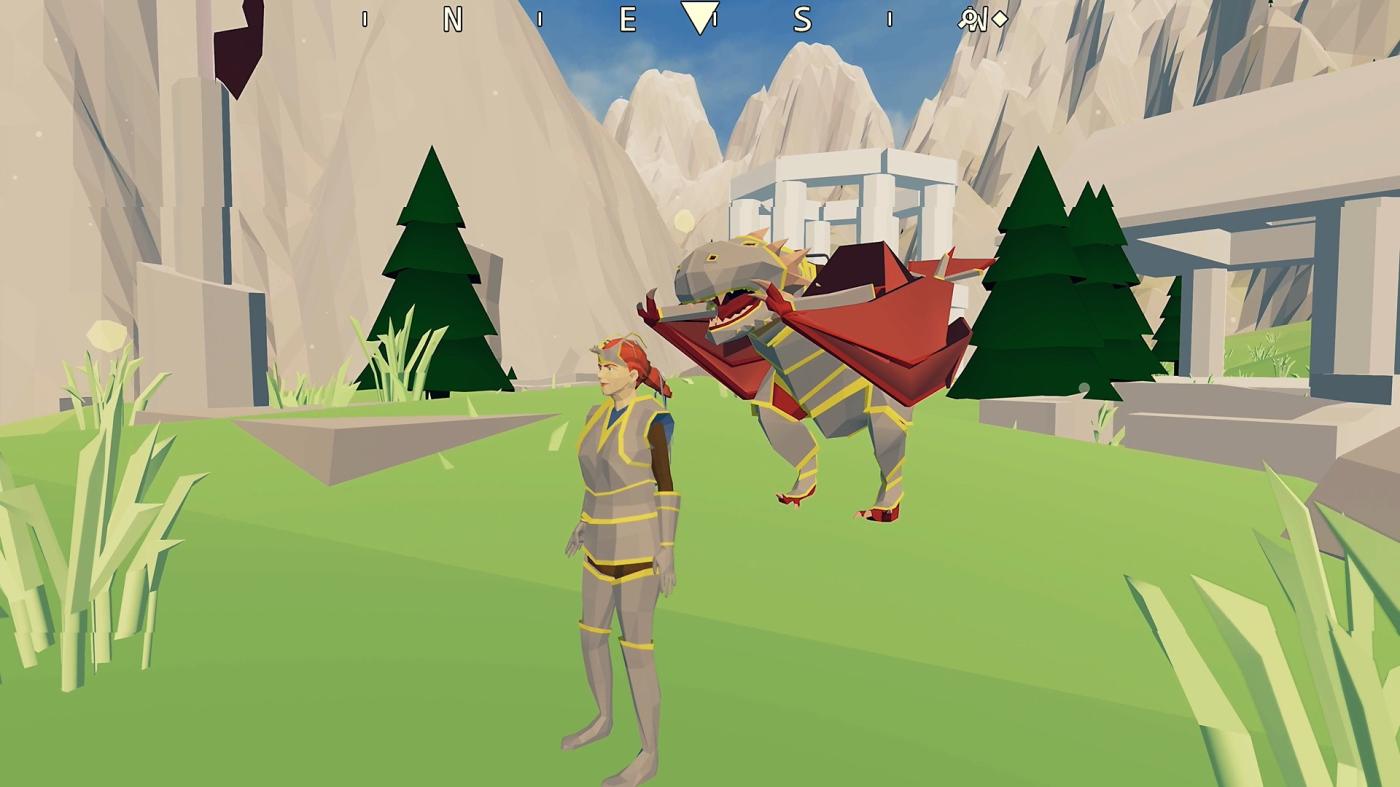
Instead, you’ll want to spend the majority of your time on the back of your dragon. On the ground, the dragon can run much more quickly than Ayre can, and, of course, it can fly, too. The only thing you can’t do on the back of the dragon is interact with the various objects around the valley, so those are the only real times you’ll need to control Ayre on foot.
A tap of a button causes the dragon to take to the skies, and by default the dragon flies forwards. Pressing another button switches it into hover mode, allowing you to move, turn and strafe as well as adjust your altitude precisely. This latter option comes into play for a number of “sphere puzzles” around the environment, where you must pick up a sphere in the dragon’s claws then drop it into an awkwardly positioned receptacle. Your reward for this is an upgrade to your compass, making it easier to find other interactive objects around the environment.
The dragon’s flight mechanics are very enjoyable. Like a real flying object, it loses speed as it climbs and accelerates as it dives, allowing for some thrilling “swooping” movements. Unlike an aircraft, however, you can’t “stall” the dragon by climbing too quickly and losing too much speed — though it does have an effective altitude ceiling which can be upgraded as you progress through the game.
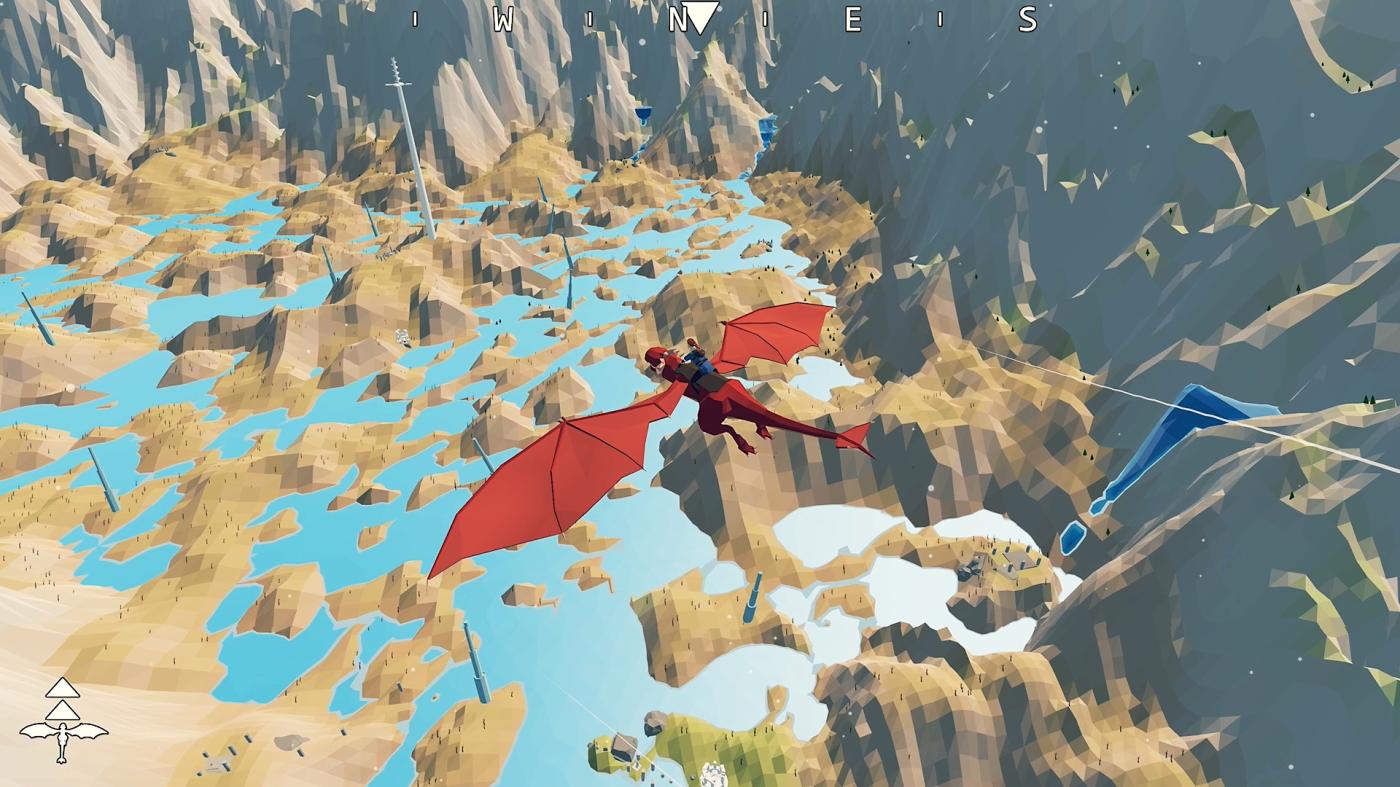
The game defaults to what it calls “arcade-style” flight controls, but also offers a supposedly “realistic” option also. I could not get this mode to work in a fashion that seemed the slightest bit convincing; more often than not I’d find that putting the dragon in level flight would simply cause it to rotate uncontrollably, meaning that in order to fly “straight”, I’d have to bank to a 90-degree angle. That’s not how aircraft work — and were dragons to be a real thing, I’m not sure that’s how they’d work either. Thankfully, the arcade-style controls are more than adequate.
The camera takes a little getting used to. In the air, you have the option of a far-out third-person view which does not rotate the camera automatically as the dragon turns, or a camera fixed to the dragon’s back just behind where Ayre is sitting; if you ever played Pilotwings 64, the latter is similar to the second camera option for the hang-glider.
Both are useful; the former makes for some fun cinematic camera angles as well as a good general overview of the environment; it’s also useful for the hover mode. The latter, meanwhile, is better for more precise flying. It would have been nice to have a full-on first-person view though, since it’s possible to do this while walking around on foot.
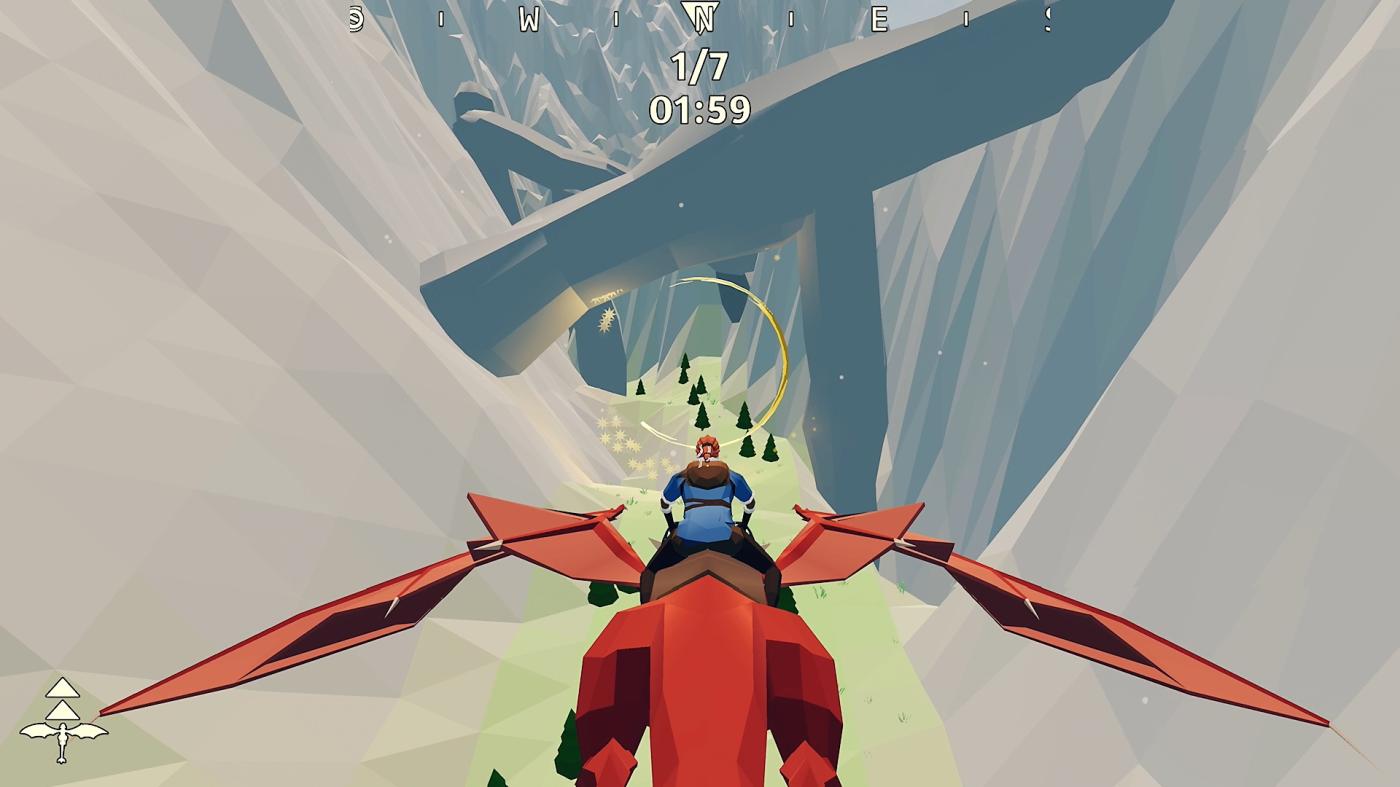
Aside from the aforementioned crystal shards and sphere puzzles, other activities around Ayre and the Crystal Comet’s world include finding armour pieces, which can be used to customise both Ayre and the dragon’s appearance; ring races which, if successfully completed in the time limit, upgrade the dragon’s abilities; and historical sites, which provide the main bulk of the narrative in Ayre and the Crystal Comet.
The gradual discovery of the valley’s history as you find various landmarks is quite enjoyable, and it’s clear that some thought has gone into the game’s lore. It’s a pity that the script hasn’t been proofread, however, as it’s riddled with spelling and grammatical mistakes that make things feel a bit amateurish at times. A bit of polish goes a long way with games like this, particularly if you’re expecting players to feel invested in what’s going on.
Visually speaking, the game adopts an angular, low-poly style that looks great — though it’s baffling why this performs so poorly on PlayStation 4. As previously mentioned, though, at a consistently smooth, slick frame rate and high resolution on more powerful systems, the game looks lovely, with a particularly impressive draw distance really giving you a sense of the world’s scale.
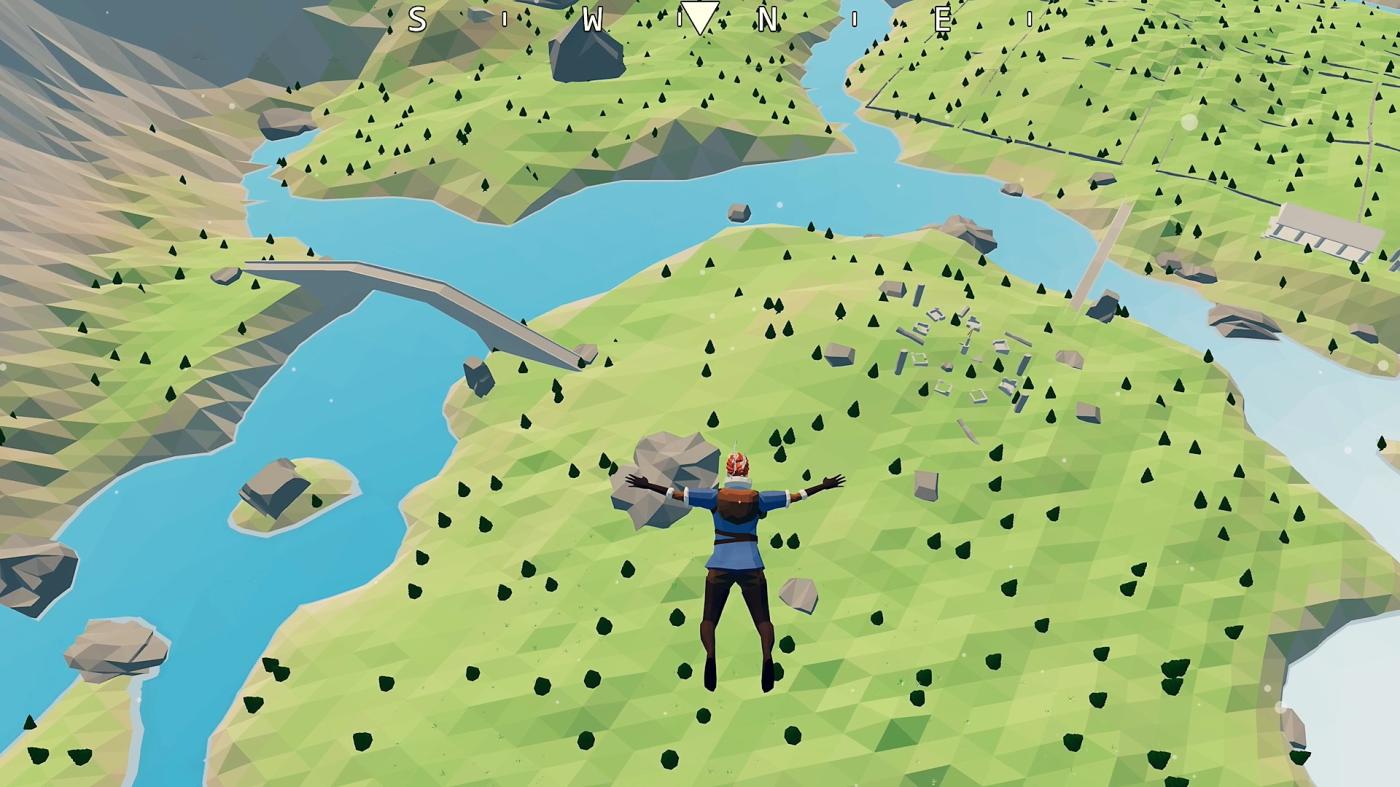
The visual aesthetic is complemented by some simple piano music that effectively emphasises the game’s overwhelming feel of loneliness and isolation. During ring races, the music becomes more complex and texturally rich, though the fact it remains limited to just piano keeps the sense of atmosphere intact. It’s a good approach for a game like this.
While for the most part, the game plays well on the more powerful systems, there are a few janky rough edges here and there regardless of platform. Notably, attempting to call Ayre’s dragon when on foot can be a bit hit-and-miss at times, with the dragon often opting to fly in huge circles around your location before landing somewhere miles away rather than just descending to where you are. There are also a few places around the map where it’s possible to get the dragon “stuck”, meaning you’ll need to plod away very slowly on foot until you’re out of range, then call it again so it magically teleports near to where you are.
As previously noted, Ayre’s animation demonstrates a lack of polish, with her walking and running animations making her feel more like a wooden doll with moveable limbs than a real human being. Part of the problem is the speed of the animation; even when running, her movements are so slow she looks like she’s jogging through treacle. This isn’t a huge issue if you spend the majority of your time on the back of the dragon as is clearly intended, but it would have been nice for the on-foot segments to feel a little more convincing and well-realised.
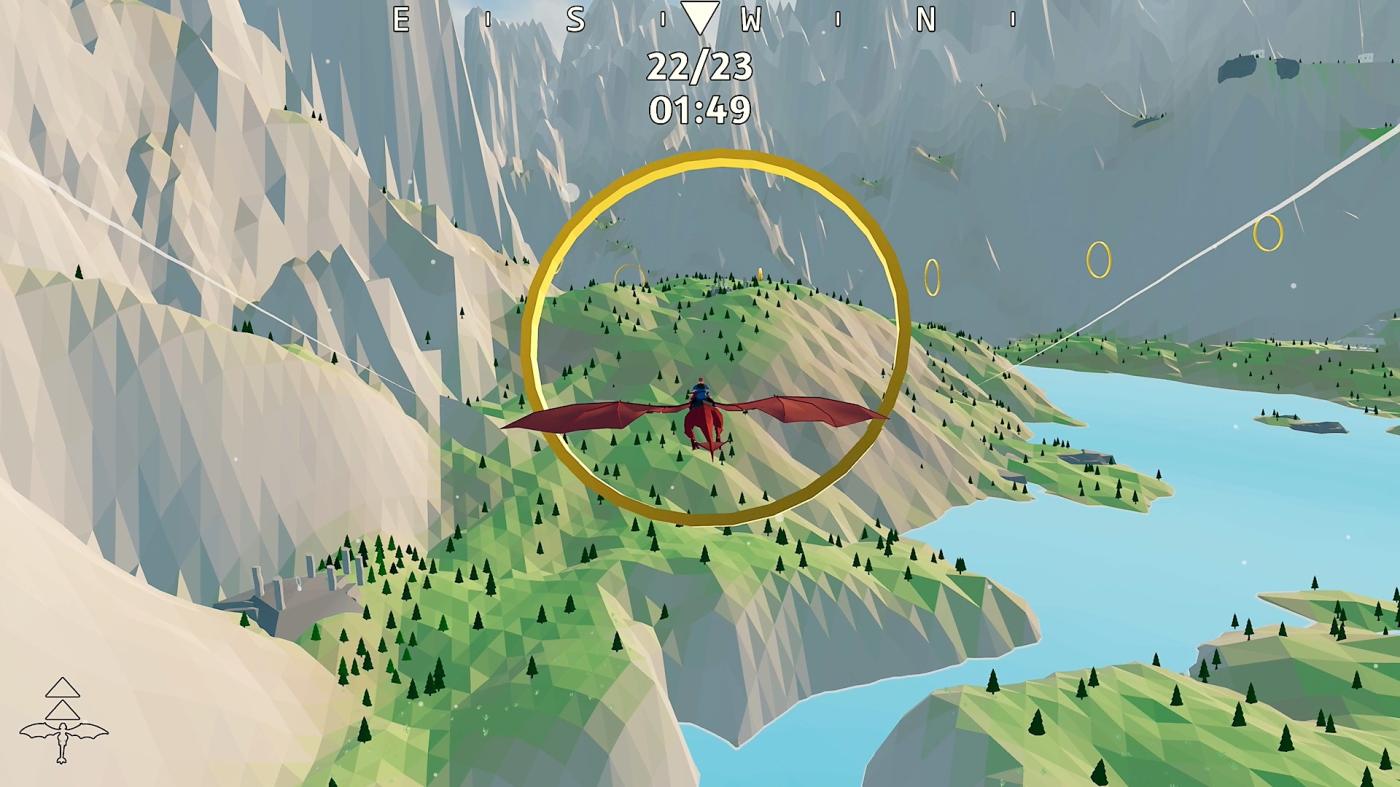
On the whole, so long as you play it on hardware that is up to the job, Ayre and the Crystal Comet is a good time. Non-violent open-world games have a definite appeal to them, and this is a good implementation of that formula, emphasising exploration and discovery over a theme park full of tasks to complete and setpieces to discover.
The experience doubtless won’t be for everyone — but if you’re the sort of person who enjoys more chilled-out experiences in gaming, Ayre and the Crystal Comet is worth a look, so long as you’re running it on one of the more modern systems.
Join The Discussion
Rice Digital Discord
Rice Digital Twitter
Rice Digital Facebook
Or write us a letter for the Rice Digital Friday Letters Page by clicking here!
Disclosure: Some links in this article may be affiliate links, which means we may earn a small commission if you make a purchase after clicking on them. This is at no additional cost to you and helps support Rice Digital!
- Letter from the Editor: passing the torch - June 30, 2023
- Super Woden GP 2 is looking promising - June 30, 2023
- Inti Creates is making a 32 bit-style Love Live action platformer - June 26, 2023






